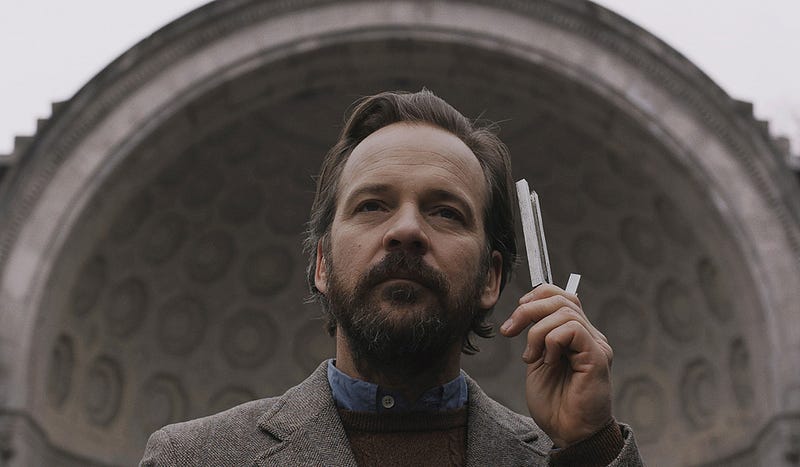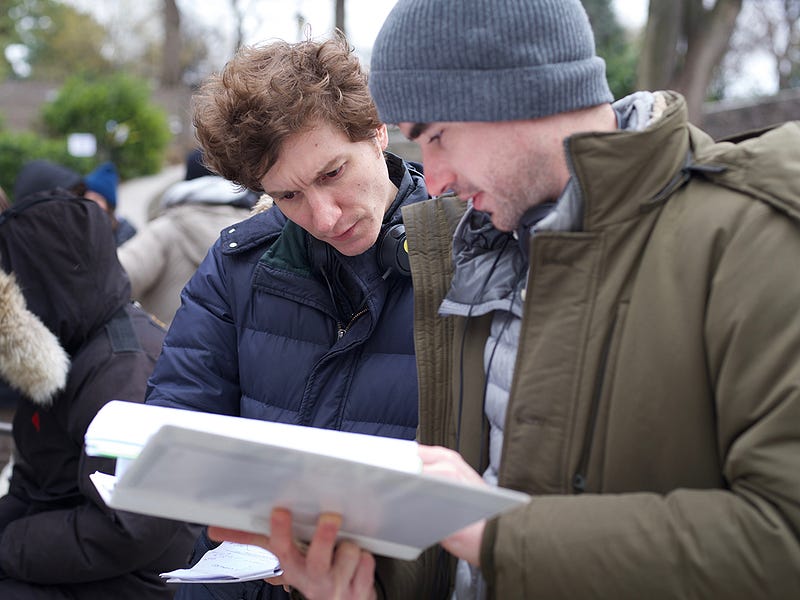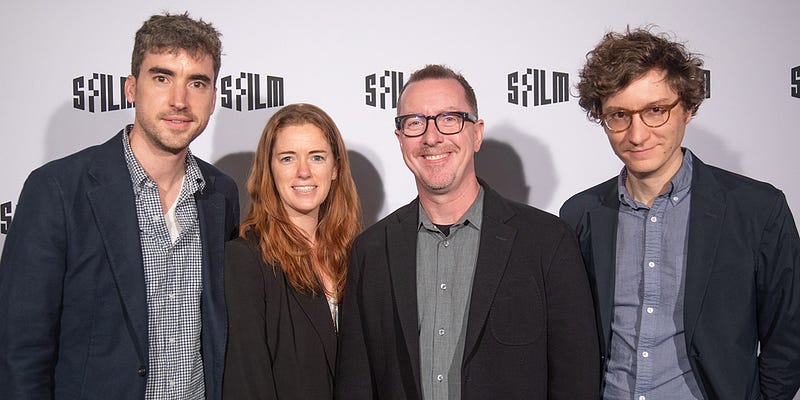Guest post: ‘The Sound of Silence’ producer Ben Nabors on the SFFILM Dolby Fellowship experience
Guest post: ‘The Sound of Silence’ producer Ben Nabors on the SFFILM Dolby Fellowship experience

In 2018, SFFILM and the Dolby Institute partnered to create a new fellowship, supporting films from development through post-production. The SFFILM Dolby Fellowship provides an exciting opportunity rarely afforded to independent filmmakers — to thoughtfully elevate and deepen the role of sound and image in their finished films with advanced technology from Dolby Laboratories. SFFILM Makers, and the Dolby Institute offer the hand-picked recipients artistic and industry guidance, facilitate introductions, and provide a cash grant allowing them to begin work with a sound designer during the screenwriting stage. Fellows also gain post-production support, with comprehensive sound design, a Dolby Atmos mix, and Dolby Vision color correction and mastering support.
The Sound of Silence, co-written/directed by Michael Tyburski and co-written/produced by Ben Nabors, was the inaugural recipient project of the SFFILM Dolby Fellowship. On the occasion of the film’s theatrical opening in San Francisco, we asked Nabors to tell us a bit about their experience during the fellowship.
ROOM TONE, PLEASE
by Ben Nabors

Sound is not treated fairly in screenwriting. We have syntactical conventions for representing dialogue, character action, camera shots, and even props on the script page, but what about sound? It’s easily 50% of the moviegoer’s experience (many wise filmmakers would say that it represents even more), yet does it share half of the real estate on the screenwriter’s page? Does it receive a comparable line item in the budget to that of the camera department? Does sound get a fair share of a director’s prep time? And ask a sound recordist what response they hear when they sheepishly request “room tone, please.” Check your outtakes: they hear a collective groan.
Sound, both conceptually and narratively, is fundamental to our SFFILM-supported project The Sound of Silence. Sound is setting and character. In our case, it emerged naturally from the story — the film follows a house tuner named Peter Lucian who calibrates the subtle noises in people’s New York City apartments to adjust their moods. Though a fictional profession, the house tuner’s work is steeped in real science and musical theory. He understands the emotional influence of sound on his client’s lives so that he can tweak and adjust their sonic environments, all while inching closer to a grandiose theory about the impact of sound on the city as a whole. Peter Lucian (played expertly by Peter Sarsgaard) is a human antenna, personifying the power of sound through his own hypersensitivity and emotional exposure.

Myself and director/co-writer Michael Tyburski spent several years staring at our script pages and imagining the movie in our heads. When it came to what the movie would look like, we had New York City around us and an archive of past films that contained traces of our own. When it came to what the movie would sound like — what it had to sound like to tell our story well — there wasn’t much to reference. We knew what we wanted to do, but we didn’t know how: technically, creatively, even financially.
Enter SFFILM and the Dolby Institute. SFFILM and Dolby literally made our movie possible. There, I said it. We would not be telling the same story without them. We had the intention to represent sound as an evolving character in our story, we hoped to invite the audience into a rare and empathetic sonic-point-of-view, and we imagined immersing viewers in the sonic textures of a vibrant city… But, we didn’t have the means or the technology to do any of this. Why? We were on a budget. To my opening questions about the diminutive role of sound in the preparation and production process, there’s one simple answer: resources.

It’s not a ground-breaking revelation but a common lament: independent filmmakers don’t have enough time or money to allocate to picture and sound equally. So, they must compromise. In a culture that has tricked itself into prioritizing “the look,” sound suffers. The SFFILM Dolby Fellowship allowed us the tremendous luxury of not compromising. From the pre-production stage, we engaged our sound design team to discuss the sonic atmosphere of each scene much as a director would discuss paint colors with their art department. Creative conversations with Dolby Labs’ Chief Scientist Poppy Crum enabled us to check the finer points of our script against the real research of sound and its effect on the mind and body. Extended time in the sound mix allowed us to overlap picture editorial, music composition, and sound design so as to better serve the story. Access to Dolby Atmos technology, an immersive object-based sound system, enabled us to swallow our audience in sound, very much akin to the experience of our main character. Michael and I had always hoped to accomplish these things as we were writing our story, but we had no means. SFFILM and Dolby made it possible.
The Sound of Silence is indebted to the Dolby Institute and SFFILM. For Michael and I, there are few things we can do to repay the gift these organizations have given to our movie, but hosting the surviving family members of the great Ray Dolby (no doubt a kindred spirit with our own Peter Lucian) at our film’s Sundance premiere was hopefully some small way of saying “thank you.”
For more information, visit sffilm.org/makers.